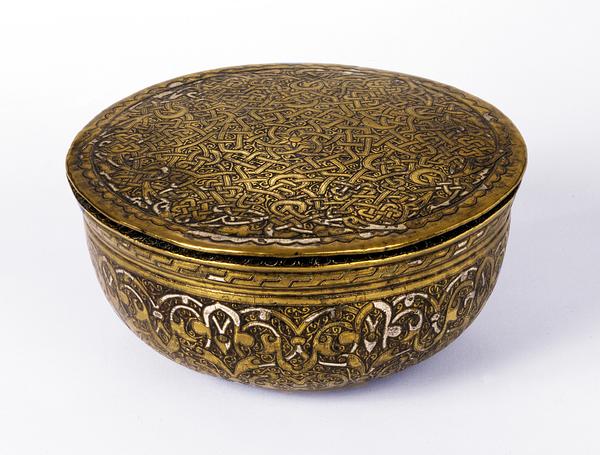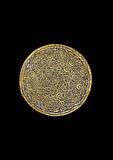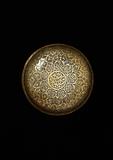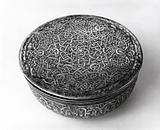Lidded bowl, cast brass, inlaid with silver and gold
Syria; 15th century
H: 6; Diam: 12.8 cm
This bowl, whose original silver and gold inlay has almost disappeared, is an extreme example of the sumptuous total decoration of the surface often found on Islamic works of art. Both the bowl and its lid have carefully composed, concentric patterns consisting of interlacing and arabesques, and only the outermost edges are plain. The bowl was furthermore inlaid with a red, lacquer-like mass that increased the coloristic effect.
Metalwork of this type was exported to Europe, and many pieces have either a European coat of arms or empty spaces that could later be engraved with one. In Venice, goods were produced that imitated the Syrian originals.
Inv. no. 24/1970
Published in:
Kjeld von Folsach: Islamic art. The David Collection, Copenhagen 1990, cat.no. 344;
Kjeld von Folsach: Art from the World of Islam in The David Collection, Copenhagen 2001, cat.no. 521;
David Abulafia [et al.]: Mediterraneum. Splendour of the Medieval Mediterranean 13th-15th centuries, History Museum of Catalunya, Barcelona 2004, p. 335;
Sheila S. Blair and Jonathan M. Bloom (eds.): Cosmophilia. Islamic Art from the David Collection, Copenhagen, McMullen Museum of Art, Boston College, Boston 2006, cat.no. 53;
Linda Komaroff: Gifts of the Sultan: the arts of giving at the Islamic courts, Los Angeles County Museum of Art, Los Angeles 2011, cat.no. 55 og fig. 80;
Kjeld von Folsach: Flora islamica: plantemotiver i islamisk kunst, Davids Samling, København 2013, cat.no. 30;
Francisco Hernández Sánchez: “Dos nuevas piezas metálicas mamelucas de la Colección del Instituto Valencia de Don Juan” in Susana Calvo Capilla (ed.): Las artes en al-Andalus y Egipto: contextos e intercambios, Madrid 2017, fig. 4.A, p. 138;




